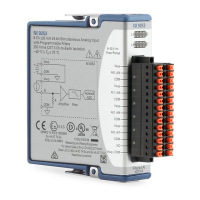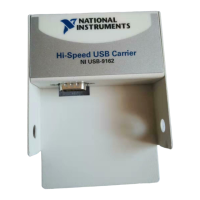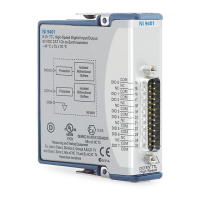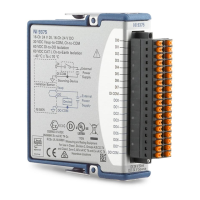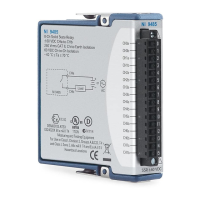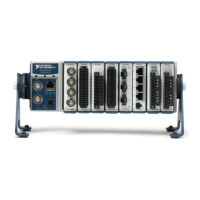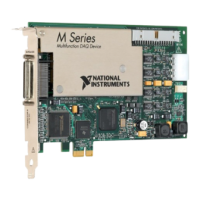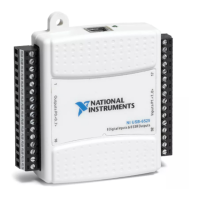NI 9220 Calibration Procedure | © National Instruments Corporation | 3
Test Equipment
Table 1 lists the equipment recommended for the performance verification and adjustment
procedures. If the recommended equipment is not available, select a substitute using the
requirements listed in Table 1.
Test Conditions
The following setup and environmental conditions are required to ensure the NI 9220 meets
published specifications.
• Keep connections to the NI 9220 as short as possible. Long cables and wires act as
antennae, picking up extra noise that can affect measurements.
• Verify that all connections to the NI 9220 are secure.
• Use shielded copper wire for all cable connections to the NI 9220. Use twisted-pairs wire
to eliminate noise and thermal offsets.
• Maintain an ambient temperature of 23 °C ±5 °C.
• Keep relative humidity below 80%.
• Allow a warm-up time of at least 10 minutes to ensure that the NI 9220 measurement
circuitry is at a stable operating temperature.
Initial Setup
Complete the following steps to set up the NI 9220.
1. Install NI-DAQmx.
2. Make sure the NI cDAQ-9178 power source is not connected.
3. Install the module in slot 8 of the NI cDAQ-9178 chassis. Leave slots 1 through 7 of the
NI cDAQ-9178 chassis empty.
4. Connect the NI cDAQ-9178 chassis to your host computer.
5. Connect the power source to the NI cDAQ-9178 chassis.
Table 1. Recommended Equipment
Equipment
Recommended
Model
Requirements
Calibrator Fluke 5700A Use a high-precision voltage source with an
accuracy of ≤15 ppm and an output impedance
of ≤50 Ω.
Chassis NI cDAQ-9178 —
DSUB Connection
Accessory
NI 9923 —
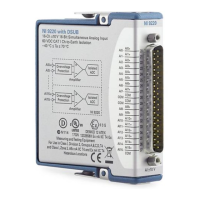
